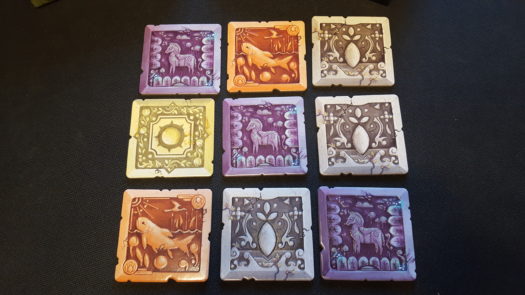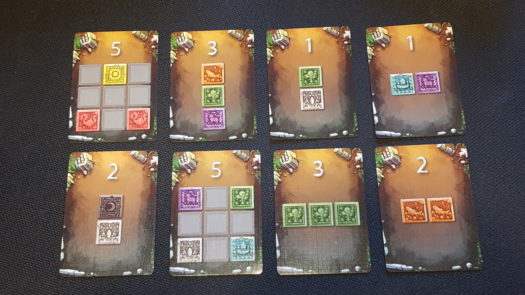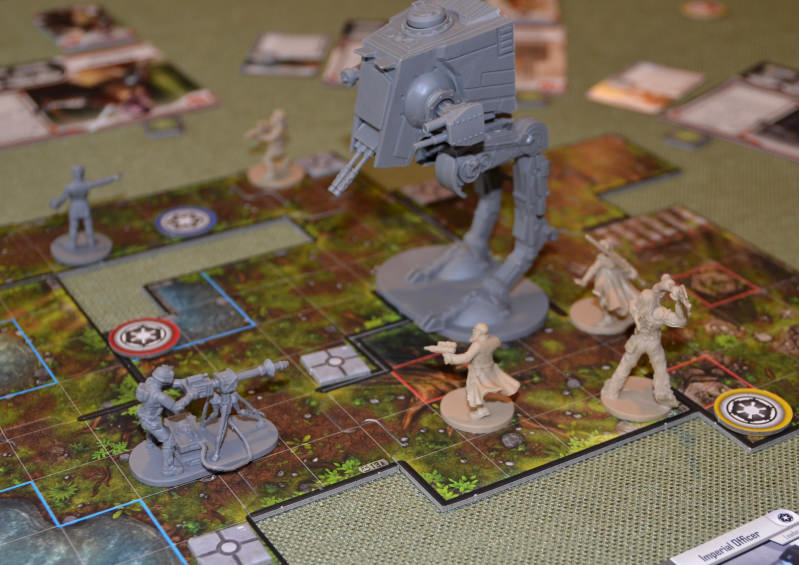Shifting Stones Board Game Review

It’s time to leave no stone unturned!
Shifting Stones from Gamewright is a fun hand management, puzzle style game for the whole family.
Players will discard Pattern cards from their hand to manipulate the center Stone tiles in order to complete other Pattern cards. The player to do this the most proficiently will be the winner.
How to play Shifting Stones
Set up:
To set up Shifting Stones, players shuffle and randomly create a 3×3 grid with the 9 Stone tiles in the center of play. Players then shuffle the Pattern cards and deal each player 4 cards. The remainder are placed in a face down draw pile by the Stone tile grid.
Players are now ready to begin.

Gameplay:
Shifting Stones is played over a series of rounds until one player collects the required number of completed Pattern cards based on the number of players: 10 in a 2 player game, 9 in a 3 player game, 8 in a 4 player game and 7 in a 5 player game.
To complete a Pattern card, a player will “shift” and “flip” the Stone tiles in the center of play until the layout matches that Pattern card.

To “shift” one of the Stone tiles, a player will discard one of the Pattern cards from their hand. Then they swap 2 orthogonally adjacent Stone tiles. To “flip” a tile, a player will discard one of the Pattern cards from their hand and then flip one of the Stone tiles to its opposite side.
A player may “shift”, “flip”, and complete Pattern cards in any order and as many times as they can or want during their turn. Once their turn has ended, they draw new Pattern cards until they again have 4 cards in hand.
The other option for a player on their turn is to not play any cards and instead draw 2 cards.
This continues until a player has reached the number of completed Pattern cards required for victory. Players continue taking turns until everyone has had an equal number of turns. Players then add up the points on their completed Pattern cards and the player with the most points wins.

What we like about Shifting Stones
Shifting Stones is a very light, puzzley, hand management game that is super easy to learn, set up and play.
The main actions you take during your turn, are the “shifting” and “flipping” of the center Stone tiles. And, since you’re spending the limited number of Pattern cards out of your hand (4 to 6 cards per turn), you must be careful and thoughtful on how to do it.
You must also decide on going for bigger point cards or striking quickly with smaller point cards.
The artwork and components are great and really tie in the light theme of rearranging the “mystical stones”. The “stone” tiles are thick tile boards that won’t wear down. And the card and rules layout makes everything super easy to read and understand.



How does Shifting Stones score on our “Let’s Play Again” game meter?
 With all the different decisions to be made and the sliding puzzle aspect, Shifting Stones ranks high on our “Let’s Play Again Meter”.
With all the different decisions to be made and the sliding puzzle aspect, Shifting Stones ranks high on our “Let’s Play Again Meter”.
Couple that with the fact that even the younger kids in the family can play and we have a hit.
Happy gaming!
About the Author
Dane is an Advertising and Layout Manager for a national magazine by day and a husband, father of four, and board gamer by night (and mornings). He has a passion for board games and believes board games help bring families closer together while providing kids a unique way to learn many diverse skills. And he thinks they’re downright fun!!!
We’d like to thank Gamewright for a review copy of Shifting Stones.






> based on the number of players: 10 in a 2 player game, 9 in a 3 player game, 8 in a 4 player game and 5 in a 7 player game.
I presume you meant “7 in a 5 player game”?
Thanks for the catch Pedro.
You missed a rule! The player with most “1”s at the end gets 3 points extra. So your final tally is wrong: the second player gets 3 more points: 20, and wins.
Thanks for the catch Erik.